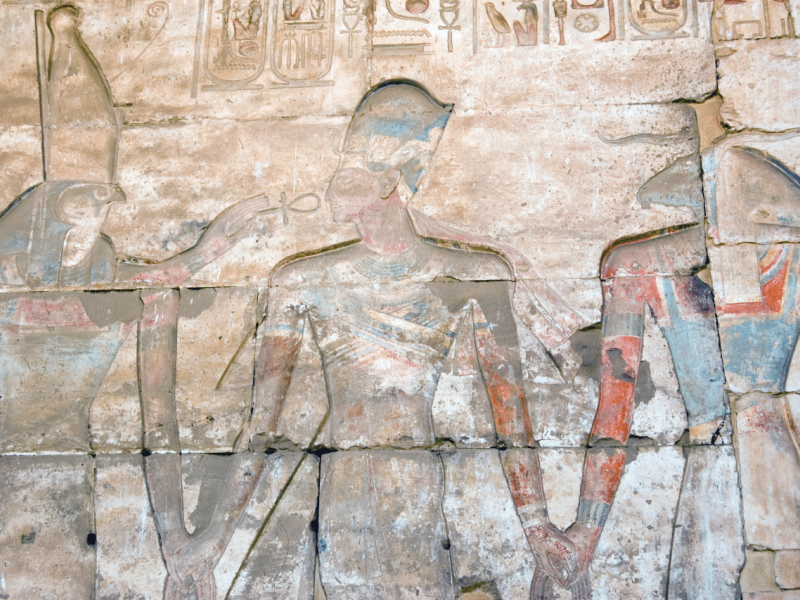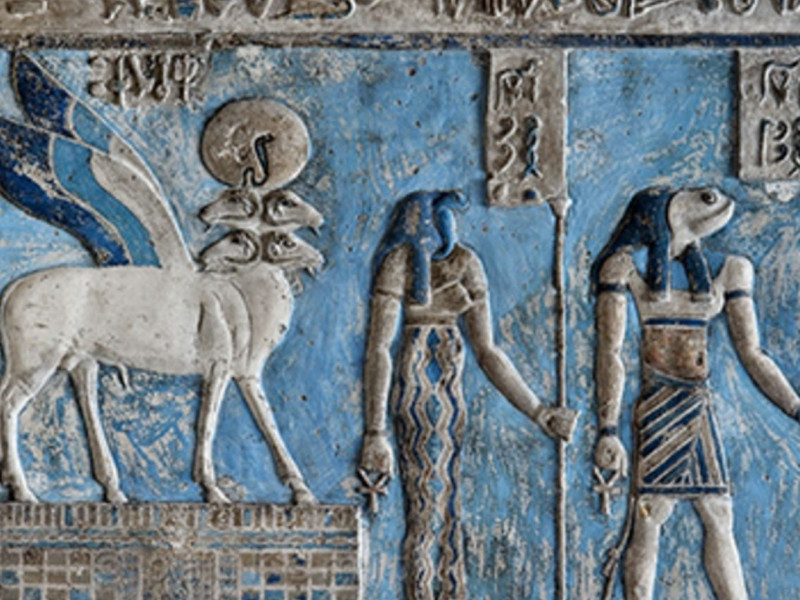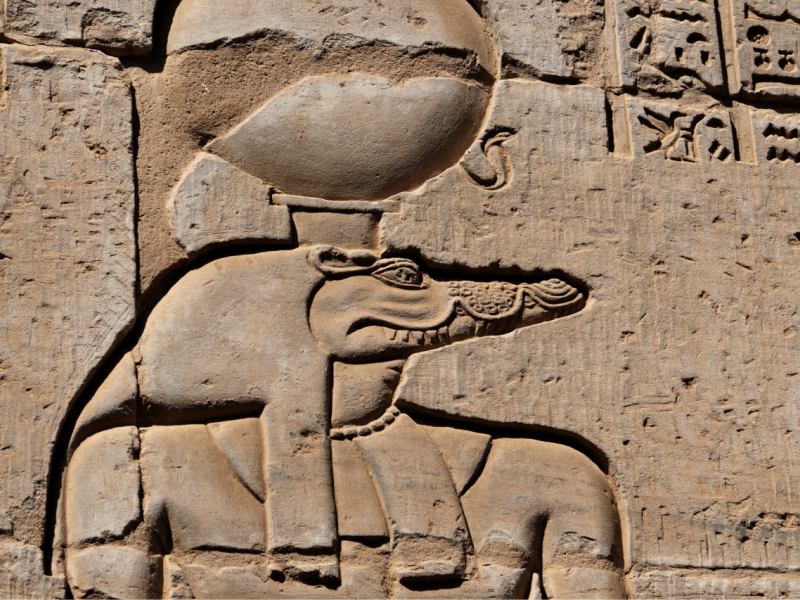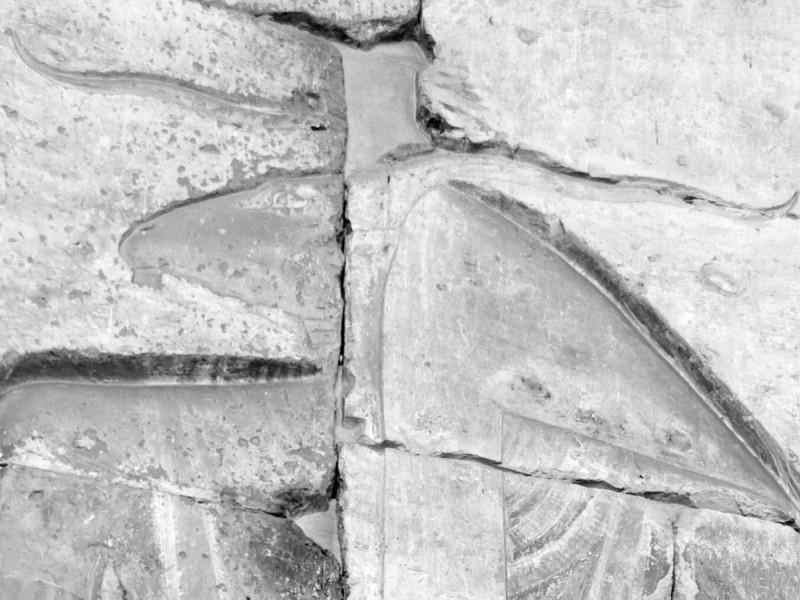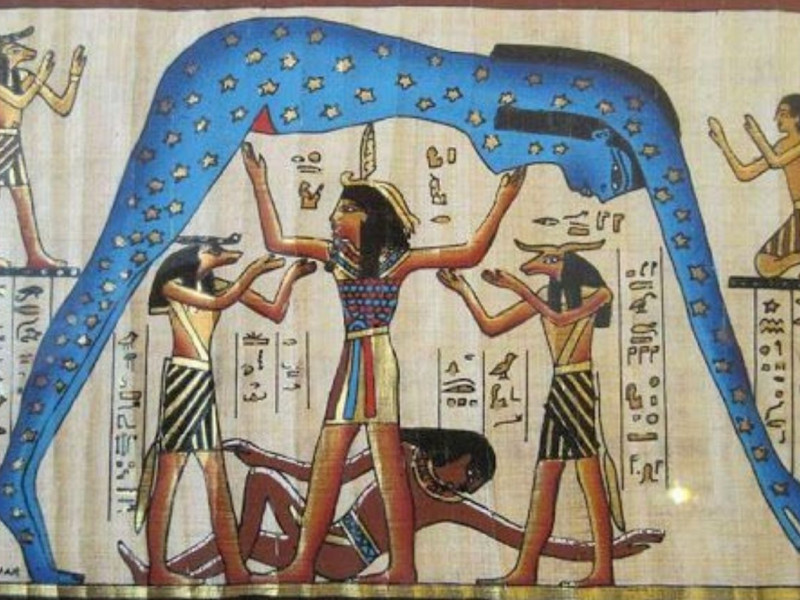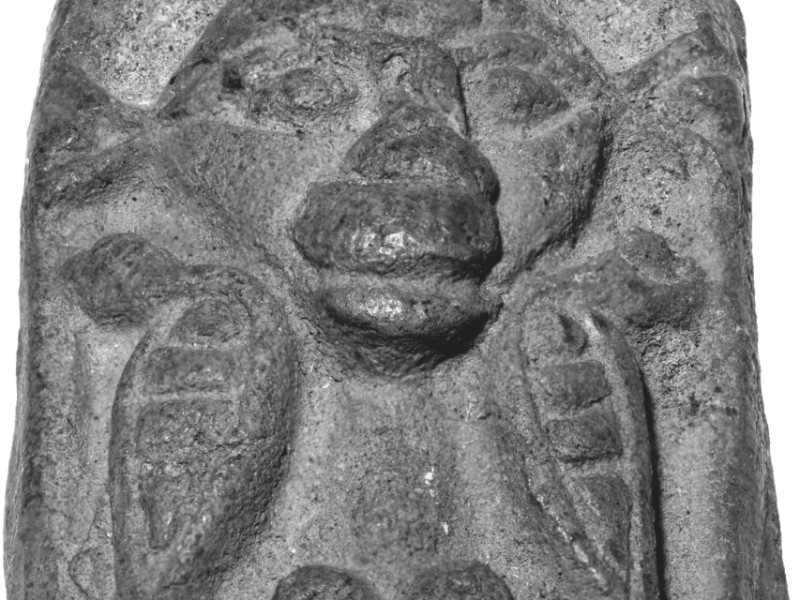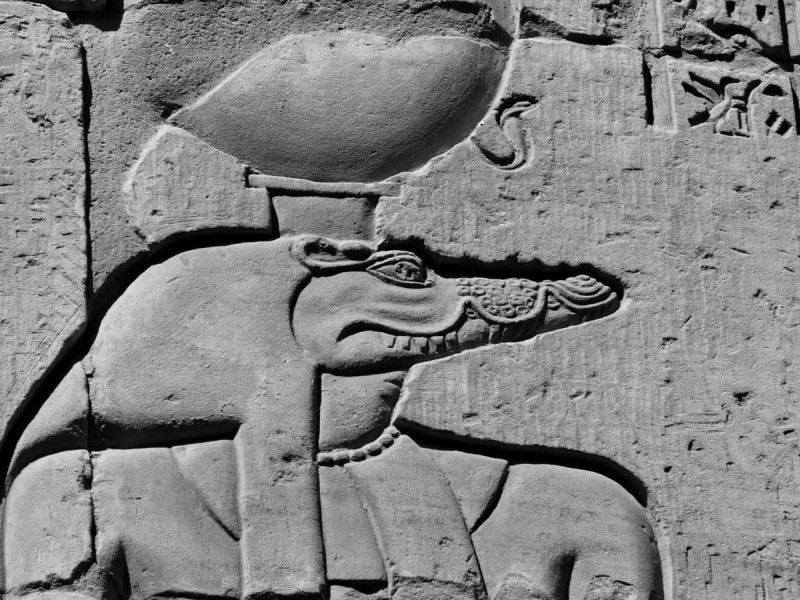Hapi
Hapi: the Egyptian Fertility God who Caused the Nile to Rise and Fall
In this in-depth bio, you will learn who Hapi was, his history, and the many myths and legends credited to his name.
You will also learn:
Why Hapi was worshipped as an Egyptian deity
The role of the god of inundation in Egyptian society
How Hapi was depicted in Egyptian artwork
The names and official titles of Hapi
Who Hapi was in Egyptian mythology
The first documented mention of Hapi in the ancient Pyramid Texts
Hapi’s specific role as an Egyptian river god
Examples of surviving hymns to Hapi
Hapi
In the religion of ancient Egypt, Hapi was the god of the inundation of the Nile. As the Nile was the lifeblood for the Egyptian kingdom, Hapi was one of the most celebrated gods in the ancient pantheon.
The annual flooding of the Nile deposited fertile soil upon the banks of the river, lending to lush vegetation and food crops. This flooding was titled the Arrival of Hapi, and because of the life the Nile flooding brought, Hapi was also considered a fertility god.
Hapi was believed to live in a cavern near Aswan, near Nubia, where the ancient Egyptians believed the source of the Nile flowed from. Because of this, the Cult of Hapi, which was a Nile River religion, was based at the first of the Cataracts of the Nile – shallow lengths of the Nile River that were located between Aswan and Khartoum where a number of rocks and boulders rose above the riverbed creating a series of islands.
It was there at the island named Elephantine that Hapi’s priests crafted rituals to maintain the annual flow of the Nile River and keep Hapi appeased.
On Elephantine, the priests continually monitored the Nilometer, a device which measured the level of the Nile River to predict the annual flooding. It was also there that many Egyptologists believe that Brides of the Nile, virgins selected for their purity and innocence, were sacrificed annually to honor the Egyptian river god.
Appearance
As a fertility god, Hapi was considered rather androgynous. In a seeming contradiction, Hapi was both an Egyptian god of the Nile and goddess of the Nile, even though Hapi for all intents and purposes was male.
In artistic representations, Hapi was depicted with a large belly and equally large drooping breasts, and often wore a ceremonial loincloth and a false beard, since he was unable to grow facial hair. His skin was the color of aquamarine, or sometimes blue or green to represent rising and receding waters.
In Lower (north) Egypt, since the Nile was filled with frogs and papyrus, artistic representations of Hapi often involved these elements. In Upper (south) Egypt, it was more common to find crocodiles and lotus plants, so Hapi was adorned with them there. In both areas, Hapi was often pictured offering food or pouring water from a jar (an amphora – a long slender Egyptian jar with two handles at the neck).
Beginning in approximately 1,800 BC, Hapi was sometimes depicted as two figures that held and tied two long plant stems together. This represented the unification of Lower and Upper Egypt and gave birth to a new hieroglyph that represented union. This hieroglyph was often carved into the bases of pharaonic statues throughout Egyptian history.
The Names of Hapi
Modern scholars believe that Hapi’s name was the name of the Nile River before the Egyptian dynasties came into being. By the time the first pharaoh was named, the Nile had become known as Iterw (meaning the river) and the name became interchangeable with the Nile River god. Hapi was also known by the names Hep, Hapy, Hap, Hap-Reset, and Hap-Meht.
As one of the most celebrated gods of ancient Egypt, Hapi enjoyed multiple honorific titles. Some of these titles were Lord of the River Bringing Vegetation, Lord of the Fish and Birds of the Marshes, Friend of Geb (god of earth), and Lord of Neper (god of grain).
Who was Hapi in Egyptian mythology?
In Egyptian mythology, Hapi was the god of the inundation of the Nile River. Because the annual flooding of the Nile was responsible for the lushness of the Nile River valley, Hapi was considered a fertility god. There are many still existent hymns dedicated to Hapi, and his shrines and temple were built where the Egyptians believed the Nile began near Aswan, at a place called Elephantine island, now named Jabal al-Silsila.
It is important to note that while Hapi was considered a god of the Nile, Hapi was not the god of the Nile itself. Hapi was the god of the flooding of the Nile, responsible for the rise and fall of its life-giving waters.
The first documented mention of Hapi in Ancient Egypt
The first historical mention of Hapi came from the Pyramid Texts of Unas, written in approximately 2,400 BC. In the texts, Hapi was asked to send a strong inundation to the Nile, as according to writing, the river flowed from Hapi’s home near the First Cataract of the Nile River.
The Pyramid Texts of Unas were the first time the inundation was mentioned as the Arrival of Hapi, and it specifically mentioned that during the inundation the Egyptians would put idols of Hapi in the towns along the river to encourage proper flooding of the Nile.
The Pyramid Texts of Unas also described how the people of Egypt would leave offerings, such as golden amulets, food offerings, and in times of desperation, human sacrifices, at specific river locations to ensure that the river flooding was not too high (which would risk destruction to towns and villages), or too low (leaving too little water for crops and livestock).
Hapi, the god of annual flooding
It is a common mistake of observers to believe that the ancient Egyptian god Hapi was the god of the Nile. However, Hapi was not the god of the Nile. He was one of several gods of the Nile River. Specifically, the gods Khnum, Satet, and Anuket were guardians of the source of the Nile, but Hapi controlled the levels of the water and how much flooding occurred annually. Hapi was also honored as the lord of the Nile River delta.
As one of the gods responsible for the Nile River, Hapi was often equated with the god Nun (who symbolized the primordial waters of chaos according to the Ogdoad of Onu (Heliopolis)), and was named the husband of Nuanet (the female aspect of Nun). As Ra, the sun god, emerged from the primordial waters of Nun and gave birth to creation, Hapi was often mentioned as a symbolic father of Ra, and therefore the father of creation itself.
Over the centuries, Hapi also became associated with the god Osiris because of his own link with fertility and the Nile. Because of this, Hapi was sometimes attached to Isis as a counterpart. The Pyramid Texts back up this claim, as over the ages Hapi was additionally mentioned as the husband of Wadjet of Lower Egypt and Nekhebet of Upper Egypt, who in turn were also associated with the goddess Isis.
The Hymns to Hapi
As one of the most popular gods of the pantheon of ancient Egypt, many hymns to Hapi have survived to modern times, such as the simple A Hymn to Hapi.
A Hymn To Hapi
“Hail to thee, O Nile! Who manifests thyself over this land, and comes to give life to Egypt!
Come and prosper!
Come and prosper!
O Nile, come and prosper!
O you who make men to live through his flocks and his flocks through his orchards!
Come and prosper, come,
O Nile, come and prosper!
Hapi, god of Egypt”
And ranging to the intricately detailed fourteen-part Hymn to the Nile Flood.
Hymn to the Nile Flood
“1.
Hymn to the flood Hail flood!
emerging from the earth, arriving to bring Egypt to life,
hidden of form, the darkness in the day,
the one whose followers sing to him, as he waters the plants,
created by Ra to make every herd live,
who satisfies the desert hills removed from the water,
for it is his due that descends from the sky
– he, the beloved of Geb, controller of Nepri,
the one who makes the crafts of Ptah verdant.
2.
Lord of fish, who allows south marsh fowl,
without a bird falling from heat
Maker of barley, grower of emmer grain,
creator of festivals of the temples.
When he delays, then noses are blocked,
everyone is orphaned,
and if the offerings of the gods are distributed,
then a million men perish among mankind
3.
If he is greedy the whole land suffers,
great and small fall moaning
People are changed at his coming,
the one who creates him is Khnum.
When he rises, then the land is in joy,
then every belly is glad,
every jaw has held laughter,
every tooth revealed.
4.
Bringer of food rich in provisions,
creator of all goodness,
lord of reverence, sweet of scent,
the one whose coming makes peace,
creator of plants for the herds,
provider of butchery for every god.
While he is in the underworld,
sky and earth are in his charge.
Filler of storerooms, enlarger of granaries,
the one who gives plenty to the orphan.
5.
Grower of trees for every desire,
without any cutting for it;
creator of boats by his might,
without any carpenter with stone (tools).
The mountains are quarried by his flooding,
without him being glimpsed,
without workers, without management for him.
One who carries off in secrecy,
and the place that is his is not known,
nor can his cavern be glimpsed in writings
6.
Without sailings of his selection
without a follower of his desire,
(yet) youths and children follows him,
and he is greeted as a king firm in his reign,
arriving in his time, filling Upper and Lower Egypt.
When drinking water, every eye is on him,
the giver of surplus in his goodness.
7.
Whoever is in want emerges in joy,
Sobek child of Neit bares his teeth
and the ennead within is parted.
The one who spouts and causes the marsh to drink,
the one who strengthens everybody.
One man is made powerful by the doing of another,
without any dispute with him.
Maker of peace who cannot be bowed,
and none can set a limit to him.
8.
Illuminator coming out of the darkness
fat for his cattle,
it is his might that creates everyone,
and none can live without him.
People are clothed by the flax of his fields,
he who makes Hedj-hetep work for him,
Shesem has made his oils,
and there is no limit to Ptah in his form.
All work is possible by him –
all writings of hieroglyphs,
his produce in the land of reeds.
9.
He who enters into the cavern, and come out on top
constantly striving to emerge in secret;
when heavy, the populace shrinks,
the food for the year is killed,
and the mighty is seen nervous,
everyone distinguished by the weapons they carry,
no one able to do their tasks,
no one to cover what should be covered,
the children of the rich cannot be adorned,
no eye-paint for the face,
a want of hair (?) for lack of it,
no anointing for anyone.
10.
What is right is fixed in the hearts of men,
but falsehood is said after poverty
A man who mixes with the marsh water
is not one to master grain,
and even if you praise all gods,
there is no bird who will descend on desert lands.
There is no one who beats his hand with gold,
there is no man who is drunk on silver,
you cannot eat steadfast lapis lazuli:
barley is the foremost for strength.
11.
For you are started songs with the harp
For you they sing with hand-claps,
For you youths and children shout out,
For you the crowds are assembled.
One who comes with riches, adorning the land,
one who makes fresh the hue of the bodies of men,
who enlivens the heart of the pregnant woman,
who loves the multitude of herds.
12.
When you rise in the city of hunger
then people are sated on your supplies
with stalk in the mouth, lotus at the nose,
everything to sprout upon earth,
all vegetables in the hands of children –
they can forget the meals,
goodness cast over the streets,
and this entire land leaping for joy.
13.
When the Flood strikes,
they offer to you
they butcher cattle for you,
offering piles are made for you,
birds are slaughtered for you,
lions are snared for you in the desert,
goodness is returned to you.
They offer to every god
according to what the Flood has created,
in first quality incense, cattle large and small, birds for the flame.
The Flood in his cavern is the mighty one.
His name is not known in the underworld,
and the gods do not emerge with it.
14.
All people raising the praise of the Ennead
Have fear for the awe made by his son the Lord of All to make the Two Riverbanks verdant
Verdant the spirit at your coming,
Verdant the spirit at your coming, O Flood
Verdant the spirit at your coming,
Come to Egypt,
make its happiness,
Make the Two Riverbanks verdant,
Verdant the spirit at your coming,
Verdant the spirit at your coming, O Flood
Verdant the spirit at your coming,
Men and herds are brought to life by your deliveries of the fields,
Verdant the spirit at your coming,
Verdant the spirit at your coming, O Flood
Verdant the spirit at your coming.”
Hapi, the ancient Egyptian deity who controlled life along the Nile
As one of the gods responsible for the life-giving powers of the Nile River, Hapi was one of the most popular and well-known deities of ancient Egypt. Depicted as androgynous, with the belly of a man and the breasts of a woman, Hapi was responsible for the fertility of the Nile River valley, thus impacting the lives of every single person within the Egyptian empire.
The annual flooding of the Nile River was called the Arrival of Hapi, as it was believed the Nile River god was responsible for the inundation of the river
The Nile was believed to begin at Hapi’s home near Aswan, and Hapi’s cult flourished upon the island of Elephantine, where his priests would make offerings and take readings of the Nileometer, a device used to predict flood levels
While considered a male, Hapi was depicted as androgynous, with pendulous breasts of a woman and the belly of a male. This represented his status as a fertility god, and he was often depicted with a false pharaonic beard
Due to the esteem Hapi was held in, he was honored with a number of titles such as Lord of the River Bringing Vegetation, and Lord of the Fish and Birds of the Marshes
The first historical mention of Hapi came from the Pyramid Texts of Unas, written in approximately 2,400 BC
Over the centuries, due to Hapi’s importance he was associated with a number of other gods such as Ra and Osiris, and also named husband to a number of aspects of Isis
A great number of hymns honoring Hapi are still existent today, such as A Hymn to Hapi and Hymn to the Nile Flood
Well-loved and honored among all Egyptians, Hapi was highly influential in the development of Egyptian history and culture, as Egypt rose and fell upon the inundation of the Nile River. From his home in the caverns of Aswan, the god Hapi saw to the recurring fertilization and renewal of the land of Egypt, and bore the responsibility for the lifeblood of one of the world’s greatest civilizations, the Nile.




